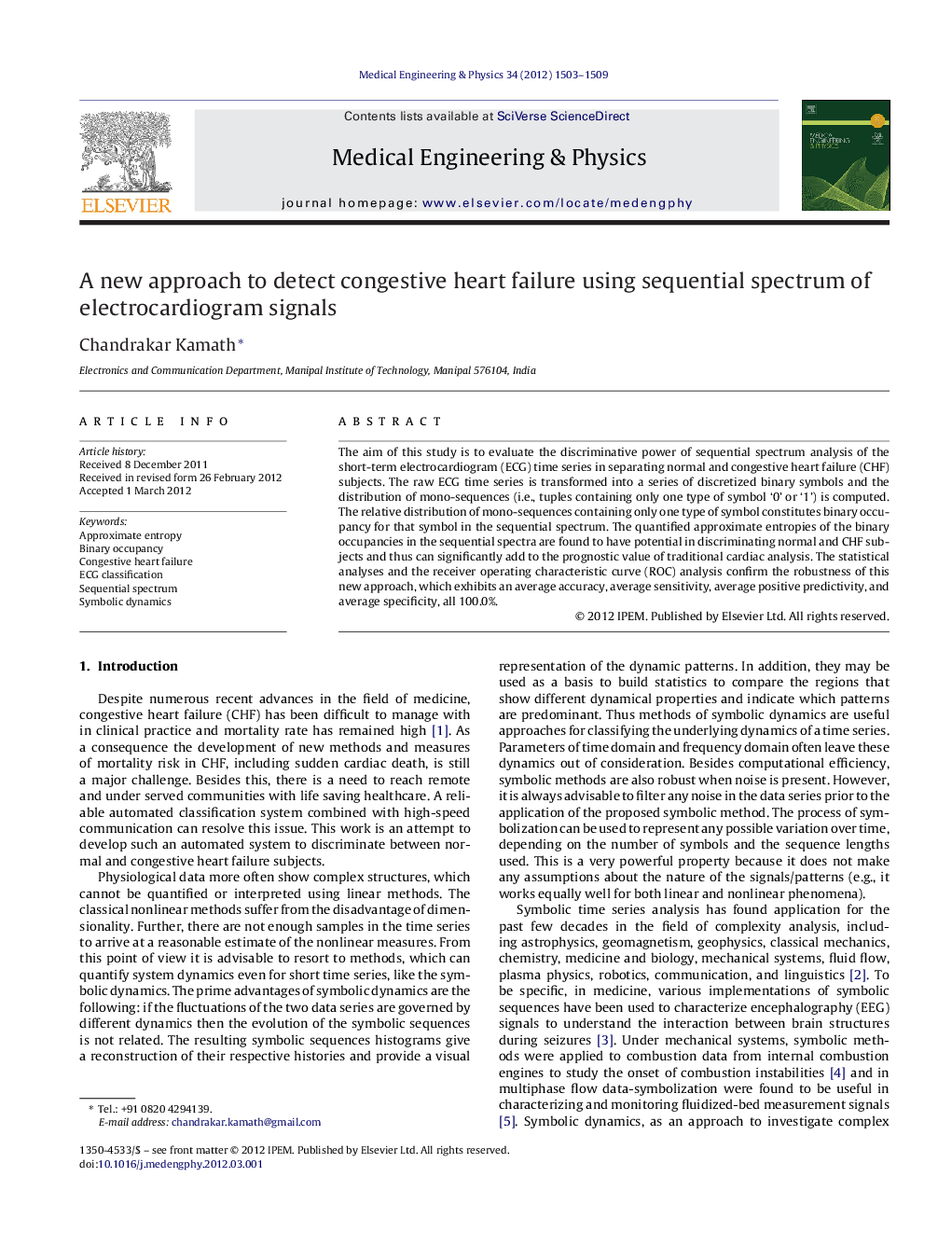| Article ID | Journal | Published Year | Pages | File Type |
|---|---|---|---|---|
| 876350 | Medical Engineering & Physics | 2012 | 7 Pages |
The aim of this study is to evaluate the discriminative power of sequential spectrum analysis of the short-term electrocardiogram (ECG) time series in separating normal and congestive heart failure (CHF) subjects. The raw ECG time series is transformed into a series of discretized binary symbols and the distribution of mono-sequences (i.e., tuples containing only one type of symbol ‘0’ or ‘1’) is computed. The relative distribution of mono-sequences containing only one type of symbol constitutes binary occupancy for that symbol in the sequential spectrum. The quantified approximate entropies of the binary occupancies in the sequential spectra are found to have potential in discriminating normal and CHF subjects and thus can significantly add to the prognostic value of traditional cardiac analysis. The statistical analyses and the receiver operating characteristic curve (ROC) analysis confirm the robustness of this new approach, which exhibits an average accuracy, average sensitivity, average positive predictivity, and average specificity, all 100.0%.
